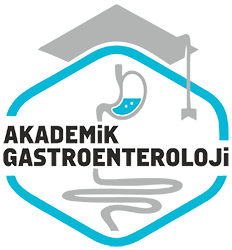Agustos 2019
Bölgemizdeki inflamatuvar barsak hastalığı tanili olgularin insidansi, demografik ve klinik özellikleri
The incidence and the demographic and clinical characteristics of patients with inflammatory bowel disease in our region
- Ana Sayfa
- Sayılar
- Agustos 2019
- Bölgemizdeki inflamatuvar barsak hastalığı tanili olgularin insidansi, demografik ve klinik özellikleri...
Özet
Giriş ve Amaç: Bu çalışmada üçüncü başamak hastanemizde son biryıldir inflamatuvar barsak hastalıklari tanısı ile takip ve tedavi edilen Hastaların klinik ve demografik özelliklerinin incelenmesi ve nüfusa göre yıllik insidans ve prevalansinin belirlenmesi amaçlandi. Gereç ve Yöntem:Bu retrospektif çalışmada, Temmuz 2017 ile Temmuz 2018 arasındaAlanya Alaaddin Keykubat Üniversitesi Alanya Egitim ve araştırma Hastanesi’ne basvuran inflamatuvar barsak hastalığı tanıli Hastaların klinikve demografik bilgileri kayit edildi. Bulgular: çalışmaya 111 hasta (53’üülseratif kolit, 48’i Crohn hastalığı, 10’u indetermine kolit) dahil edildi.Ülseratif kolit, Crohn hastalığı ve indetermine kolit Hastalarında ortalama yaş ve cinsiyet dagilimlari anlamli farklilik göstermedi. Ülseratifkolit hastalığı %50.9 ile erkek cinsiyette daha sik görülürken, Crohnhastalığı %52.1 ile kadın cinsiyette ve indetermine kolit ise %70 ile erkek cinsiyette daha sik görülmekte idi. Sonuç: yaşlara göre dagilimlarabakildiginda, bölgemizde ülseratif kolit 40-49 yaş araliginda %60 ile ensik görülürken, Crohn hastalığınin ise 19-29 yaş araliginda %53.8 ve?60 yaşta %57.1 olmak üzere bimodal pik yaptigini izledik. Ülseratifkolit için insidans her 100 000’de 3.67 iken, Crohn hastalığı için her 100000’de 7.34 olup, indetermine kolit için ise her 100 000’de 1.33 olaraktespit edilmıştır
Abstract
Background and Aims: This study was conducted to evaluate the clinical and demographic characteristics of patients diagnosed with inflammatory bowel disease who were followed up and treated in our tertiary care hospital for the past 1 year and to determine the annual incidence and prevalence according to the population. Material and Methods: This retrospective study recorded and analyzed the clinical and demographic data of patients with inflammatory bowel disease who applied to Alanya Alaaddin Keykubat University Alanya Training and Research Hospital between July 2017 and July 2018. Results: A total of 111 patients (53 patients with ulcerative colitis, 48 patients with Crohn’s disease, and 10 patients with indeterminate colitis) were included in this study. No significant difference was detected between the mean age and the gender distribution among patients with ulcerative colitis, Crohn’s disease, and indeterminate colitis. Ulcerative colitis (50.9%) and indeterminate colitis (70%) were more frequent among males, whereas Crohn’s disease (52.1%) was more frequent among females. Conclusions: In terms of the distribution according to age, ulcerative colitis showed the maximum prevalence of 60% in our region among patients in the age range of 40–49 years, whereas Crohn’s disease exhibited a bimodal peak, with prevalence rates of 53.8% in the 19–29-year age group and 57.1% in the age group of >60 years. The incidence rates for ulcerative colitis, Crohn’s disease, and indeterminate colitis were 3.67, 7.34, and 1.33 per 100 000 people, respectively



